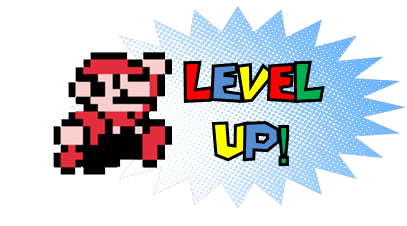Read – Methods of Monetization
It is a common criticism that businesses which profit from selling educational product are engaging in an ethical conflict. Although it would be unfair to expect an entrepreneur to not seek earnings from his/her creation, by nature, the monetization educational products is problematic as it acts to further separate the haves from the have nots. This core dilemma is exacerbated in the educational video game industry, where creative costs and a for-profit market objective limit developers looking to keep educational tools free. Consequently, the educational gaming market, like the greater video game industry, continues to be driven by the almighty dollar. Those looking to monetize have a number of options, some more invasive than others. The following is an overview of some of the most common means of monetizing educational games. 
1. Purchase – The most traditional means of monetizing a video game. The seller puts a price tag on their merchandise, and is paid in exchange for ownership. In the video game market, this exchange is increasingly one involving online currency and digital merchandise, where neither hard cash nor a physical product change hands.
2. Subscription – Another longstanding form of monetization that is increasingly common in the educational gaming industry. Purchasers pay for monthly or yearly access to a game. These are especially popular for massive multi-player online games where the need for continual development requires a steady stream of revenue. Often times these games are offered as a trial before players have to upgrade to a full subscription.
3. Upgrades – “Upgrading” is when a player pays for access to an improved version of the game. This may be a “deluxe” version with additional game-play options, or a version without ads and pop-ups. Expansion packs are another form of upgrading that are common to the greater video game industry, though not nearly as ubiquitous in educational gaming.
4. In-Game Upgrades – Another common feature of online multi-player worlds, upgrades allow players to improve their in-game experience through payment. This may include having access to aspects of game-play that are otherwise locked for those not willing to pay. Common examples are character outfits and accessories, hidden levels, locked items, or additional plays.
5. Virtual Currency – Spending real life money for virtual dollars was a practice popularized by social games such as Farmville and Mafia Wars. The concept behind virtual currency is similar to that of in-game upgrades. In this case, game players buy in-game “coins” that can be used to purchase items in the gaming world. Though this form of monetization is extremely common amongst the new generation of app games, educational video game developers have generally stayed away from using virtual currency, most likely due to the negative implications associated with such a clear-cut effort to make money, as it pertains to educational standards and ethics.
6. Donations / Crowdsourcing – An increasingly common source of funding independent gaming projects, crowdsourcing (sometimes called “crowdfunding”) websites such as Kickstarter and Indiegogo allow developers to reach out to the public for investments, with the promise of some sort of gift or return on investment once the project is complete. Similarly, game developers may offer their game for free, but ask for donations through online currency transactions like Paypal. This option remains the most ethically justifiable method of monetization for educational video game developers because it allows them to deliver their wares, while charging little to no payment to the learners themselves.
7. Advertisements – By far the most pervasive form of monetization remains one of the most common. Just as Sesame Street fought to educate without advertisement for the past fifty years, so too have many educational game developers strived to avoid advertising in their games. Still, ads remain an ever popular stream of capital, especially in social media games and apps. Developers who claim to produce games with educational merit may still sell ad-space if the price is right.
For more information on methods of monetization in the video game industry take a look at this article.


I was interested to read that part since I am aware of the idea that educational games are not profitable. There are 2 ideas in my mind that I think can provide more support and money to educational games but I don’t know to what extent are they actually used.
1. Instead of establishing a company to establish an NGO, which can receive funds and donations from huge organizations, not just crowdsourcing. It is true this won’t lead to profits as you are not allowed to make profits but you can pay well for qualified staff to work with you. It would be the same as Khan Academy. They are an NGO, receive funds from different organizations, and are able to hire excellent caliber.
2. To have different levels of subscriptions, so you give your audience the option of paying more if they can afford to. They all get the same service, but some would pay $5, others $10, and others $15 based on what they can afford. You can even with free access to those who can’t afford it. I think most people are willing to pay for something if they find it useful to their kids or their learning especially if the price is reasonable.
Initial purchases are possible through grants, donations, PAC funds, school funds, district funds, and the like, but it is the ongoing costs that would make computerized game-based learning expensive and even prohibitive. There are initiatives in the United States where computer companies supply hardware to classrooms as a way of promoting their goods and teaching students how to use computer technology as productivity tools. Could this be done by software and/or by Web-based companies? Exposing students and teachers in this way could potentially sway parents to re-think their views on game-based learning through computers and tablets because the students and the teachers would prove the short-term and the long-term learning benefits. Perhaps subscription-based monetization could bridge the home and the classroom for the students, the parent, and the teachers. Here, game-based learning could take place seamlessly between the home and the classroom.